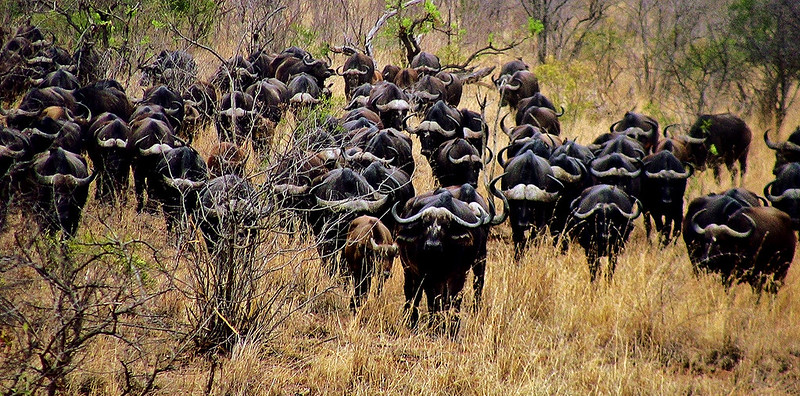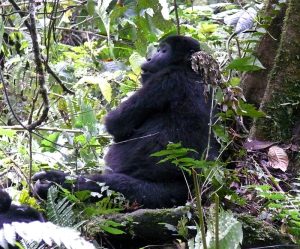10 Reasons Why East Africa Should Be Your Next Safari Destination
Overview
10 Reasons Why East Africa Should Be Your Next Safari Destination. East Africa is a land of unrivaled natural beauty, diverse wildlife, and rich cultural heritage. From the vast plains of the Serengeti to the towering mountains of Uganda, the region offers an extraordinary safari experience. we’ll explore the top 10 reasons why East Africa should be your next safari destination.
1. The Great Migration: Witness Nature’s Greatest Show
One of the most awe-inspiring spectacles in the natural world, the Great Migration is a must-see for any safari enthusiast. Every year, over 1.5 million wildebeests, accompanied by hundreds of thousands of zebras and gazelles, move across the Serengeti and Maasai Mara ecosystems in search of fresh grazing land.
Witnessing this incredible journey, particularly the dramatic river crossings where wildebeests and zebras face the threat of crocodile attacks, is an experience you’ll never forget. The Great Migration happens year-round, but the best time to catch the action in Tanzania is between June and October, while Kenya’s Maasai Mara offers thrilling views from July to September.
2. Diverse Wildlife: From the Big Five to Rare Species
East Africa is home to the Big Five: lion, leopard, elephant, buffalo, and rhinoceros. These iconic animals are the highlight for many visitors, but they are only part of the region’s incredible biodiversity. East Africa’s national parks and reserves are teeming with wildlife, from cheetahs and giraffes to hippos, crocodiles, and countless bird species.
Rwanda and Uganda offer the rare opportunity to encounter mountain gorillas in their natural habitat. Gorilla trekking in Volcanoes National Park or Bwindi Impenetrable Forest is a once-in-a-lifetime experience, as is chimpanzee tracking in Kibale Forest or Nyungwe National Park.
3. Varied Landscapes: From Vast Savannahs to Lush Forests
East Africa’s landscapes are as diverse as its wildlife. The golden plains of the Serengeti and Maasai Mara stretch endlessly, interrupted only by acacia trees and the occasional herd of animals. In contrast, the misty mountains of Uganda and Rwanda, home to gorillas and chimpanzees, offer lush forests and thick undergrowth.
Mount Kilimanjaro, Africa’s highest peak, rises dramatically from the plains of northern Tanzania, offering adventure seekers a chance to climb the “Roof of Africa.” The Great Rift Valley, with its dramatic cliffs, lakes, and volcanoes, runs through the heart of the region, offering stunning views and geological wonders.
4. Rich Cultural Experiences: Meet the Maasai and More
Beyond its wildlife, East Africa is a region steeped in culture. The Maasai people of Kenya and Tanzania are perhaps the most well-known, and many safari lodges offer opportunities to visit Maasai villages. You can learn about their traditional way of life, watch their iconic jumping dance, and even purchase handmade beaded jewelry.
In Uganda and Rwanda, you can interact with local communities through cultural tours that offer insight into traditional farming practices, music, and crafts. These experiences not only provide a deeper understanding of the region’s people but also support community-based tourism initiatives.
5. Gorilla Trekking: A Once-in-a-Lifetime Experience
Gorilla trekking in Uganda’s Bwindi Impenetrable Forest and Rwanda’s Volcanoes National Park is one of the most unforgettable wildlife experiences on the planet. The opportunity to observe mountain gorillas in their natural habitat, just a few feet away, is both thrilling and humbling.
This experience is not just about watching gorillas; it’s also about supporting conservation efforts. The permits required for trekking help fund crucial projects aimed at protecting these critically endangered creatures. This is a bucket-list activity for wildlife lovers and an essential reason to visit East Africa.
6. Conservation Success Stories: Supporting Responsible Tourism
East Africa is at the forefront of global conservation efforts. National parks like Serengeti and Maasai Mara are carefully managed to protect ecosystems and promote biodiversity. Parks like Rwanda’s Volcanoes National Park are prime examples of successful conservation, where tourism and wildlife protection work hand in hand.
Many lodges and safari operators in East Africa are committed to responsible tourism practices. By visiting the region, you’re not only experiencing incredible wildlife but also contributing to the long-term preservation of these natural habitats and the species that depend on them.
7. Mount Kilimanjaro: Challenge Yourself on Africa’s Highest Peak
For adventurers, climbing Mount Kilimanjaro is the ultimate challenge. This iconic snow-capped mountain stands at 5,895 meters and is the highest point in Africa. The trek to the summit, though demanding, is non-technical and achievable for most fit individuals. The diverse climatic zones—ranging from rainforest to alpine desert—make the ascent a unique adventure.
Whether you’re an experienced climber or a first-time trekker, reaching the top of Kilimanjaro offers breathtaking views and a profound sense of accomplishment. Kilimanjaro is also home to rich biodiversity, and your trek will take you through different ecosystems, from rainforests to glaciers.
8. Endless Birdwatching Opportunities
With over 1,000 bird species, East Africa is a paradise for birdwatchers. The region’s diverse habitats—savannahs, forests, wetlands, and mountains—attract a wide variety of birds. Whether you’re exploring Lake Nakuru in Kenya, home to thousands of flamingos, or the wetlands of Uganda’s Murchison Falls, you’ll be treated to incredible birdlife.
Some of the region’s notable species include the grey crowned crane, saddle-billed stork, and shoebill stork, as well as countless colorful bee-eaters, sunbirds, and kingfishers. Serious birders will find East Africa’s varied habitats and bird species a dream come true.
9. Pristine Beaches and Coastal Escapes
East Africa is not just about safaris. After your wildlife adventure, unwind on the beautiful beaches of Zanzibar, Tanzania, or Kenya’s Diani Beach. These coastal gems offer pristine white sands, crystal-clear waters, and an array of marine activities, from snorkeling and diving to dhow sailing trips.
Zanzibar’s rich history and Swahili culture make it a fascinating destination for travelers interested in more than just beach relaxation. Stone Town, a UNESCO World Heritage Site, offers a maze of narrow streets, bustling markets, and historic architecture to explore.
10. Unique Safari Activities: Beyond Game Drives
While game drives are the backbone of most safaris, East Africa offers a range of unique safari activities to enhance your experience. Walking safaris, popular in Tanzania and Zambia, allow you to explore the bush on foot, getting closer to the land and its inhabitants. Hot air balloon safaris over the Serengeti provide a bird’s-eye view of the landscape and wildlife below, followed by a champagne breakfast.
Night game drives, available in some parks, offer the chance to see nocturnal species like leopards and bush babies. Cultural tours, helicopter safaris, and canoe safaris provide different perspectives on East Africa’s beauty.
Conclusion
East Africa offers an unrivaled safari experience with its diverse wildlife, rich cultural heritage, and stunning landscapes. Whether you’re drawn by the Great Migration, the chance to trek with gorillas, or the lure of Mount Kilimanjaro, this region provides a once-in-a-lifetime adventure. With a commitment to conservation and responsible tourism, your visit will not only leave you with unforgettable memories but also contribute to preserving this extraordinary part of the world for future generations.




